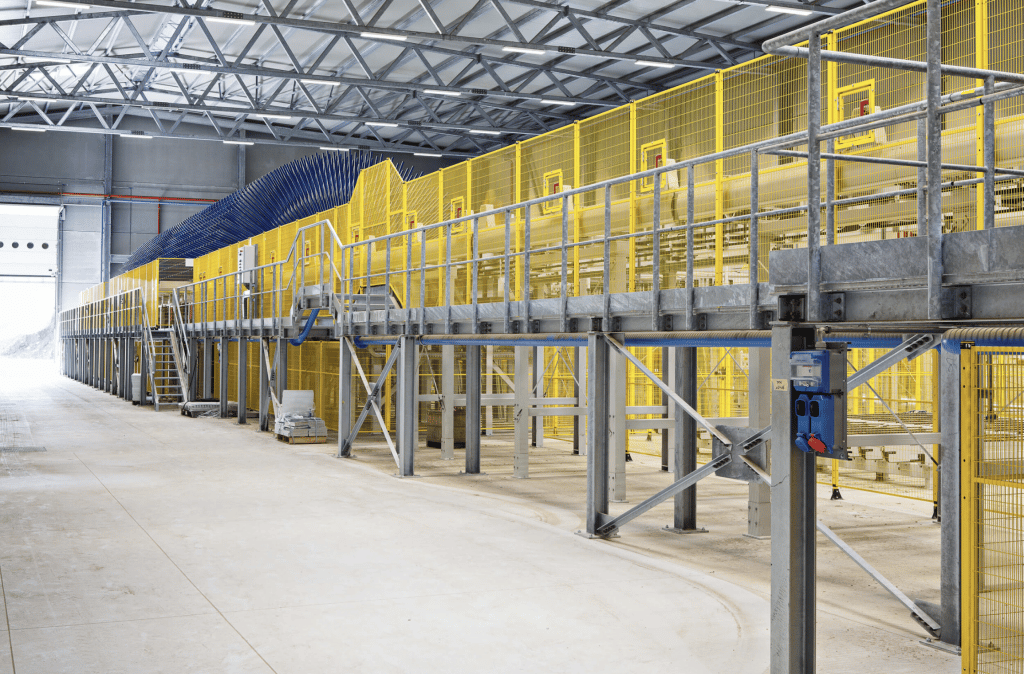Machine Guarding has become an integral part of workplace safety across multiple industries. It is crucial to protect workers from moving parts, pinch points, and other machinery-related hazards. Employers must ensure that all machines are well-guarded and that their employees understand the importance of following proper machine-guarding protocols.
Machine guarding can take many forms, from physical barriers and partitions to light curtains and presence-sensing devices. Physical guards prevent access to dangerous areas on the machine, while presence-sensing devices detect when someone is close to a moving part or hazard. Ensuring employees have a safe working environment should be priority number one for any business owner as it can save lives and protect them from costly litigation should an accident occur. Employers must ensure that all equipment is installed with appropriate guards, regularly inspected, and maintained in accordance with the manufacturer’s instructions.
Modular Machine Guarding Systems
Machine guarding is a critical aspect of workplace safety. Without the necessary machine guarding measures, employees are at risk of accidents, such as being caught in moving parts or exposed to hazardous conditions.
A common type of machine guarding system are modular safety fences that run along the perimeter of the machinery and limit access to it. Modular safety fences can be configured into different shapes depending on the size and shape of the equipment they’re protecting. Steel mesh panels provide an extra layer of protection for high-risk areas around machinery by blocking off access points that could otherwise result in dangerous situations.
Benefits of Machine Guarding
Machine guarding is an important part of workplace safety and can help to protect workers from hazardous conditions in the workplace. This article will explore the various benefits that machine guarding offers and how it can help ensure workers’ safety.
Machine guarding helps protect workers by providing physical barriers between them and any dangerous moving machinery parts. In addition, it serves as a visual warning for operators to be mindful of their surroundings while working with these machines. It also helps reduce the risk of hazards associated with manual intervention or lack thereof, such as reaching into an area where hazardous areas are located. This type of protection ensures that workers are aware of their surroundings and can take necessary precautions while operating equipment to avoid injury.
Applying Machine Guarding Regulations
Applying Machine Guarding Regulations is essential to ensure workers’ safety in industrial settings. Whether you are a supervisor, manager, or employee, understanding these regulations can help protect individuals from injuries or death. It’s important to understand how machine guarding regulations fit into OSHA’s General Duty Clause and how employers must adhere to them.
Machine guarding regulations have been established to provide safe working conditions for all employees in every industry. These regulations focus on hazards created by machines on a day-to-day basis so that employees can work more safely and efficiently. To comply, employers must install protective guards, prevent access to dangerous areas, and provide training programs for their staff on machine safety procedures.
Training and Monitoring Programs
The safety of workers is paramount in any industry. It is, therefore, essential to ensure that machine guarding is put in place as part of a comprehensive risk management strategy. Training and monitoring programs can help ensure workers’ safety by reinforcing the proper use and maintenance of machine guards, encouraging staff members to be mindful of their surroundings, and providing an environment where potential hazards can be identified.
When investing in a training or monitoring program, employers should consider factors such as implementation costs, the type of machinery used, employee experience levels, and the physical layout of their workplace. Training programs should include topics such as how to operate machines with guards installed correctly, what precautions must be taken when approaching hazardous equipment without guards, and how to report potential safety risks to supervisors or other personnel.
Resources for Guidance
Ensuring that machines are properly safeguarded and maintained can be difficult for employers and employees. For this reason, it’s important to have access to resources for guidance in maintaining industrial machinery.
Various organizations are dedicated to helping employers keep their workers safe from potential machine-related accidents. The National Safety Council (NSC) offers a wide range of resources on safety protocols in the workplace, including detailed instructions on setting up proper machine guarding systems. Additionally, the Occupational Safety and Health Administration (OSHA) provides extensive guidelines on how best to protect workers from hazards associated with operating dangerous equipment.
For more specialized assistance, many manufacturers offer training programs designed specifically for machine operators or maintenance workers who need help understanding how to use their equipment safely.

